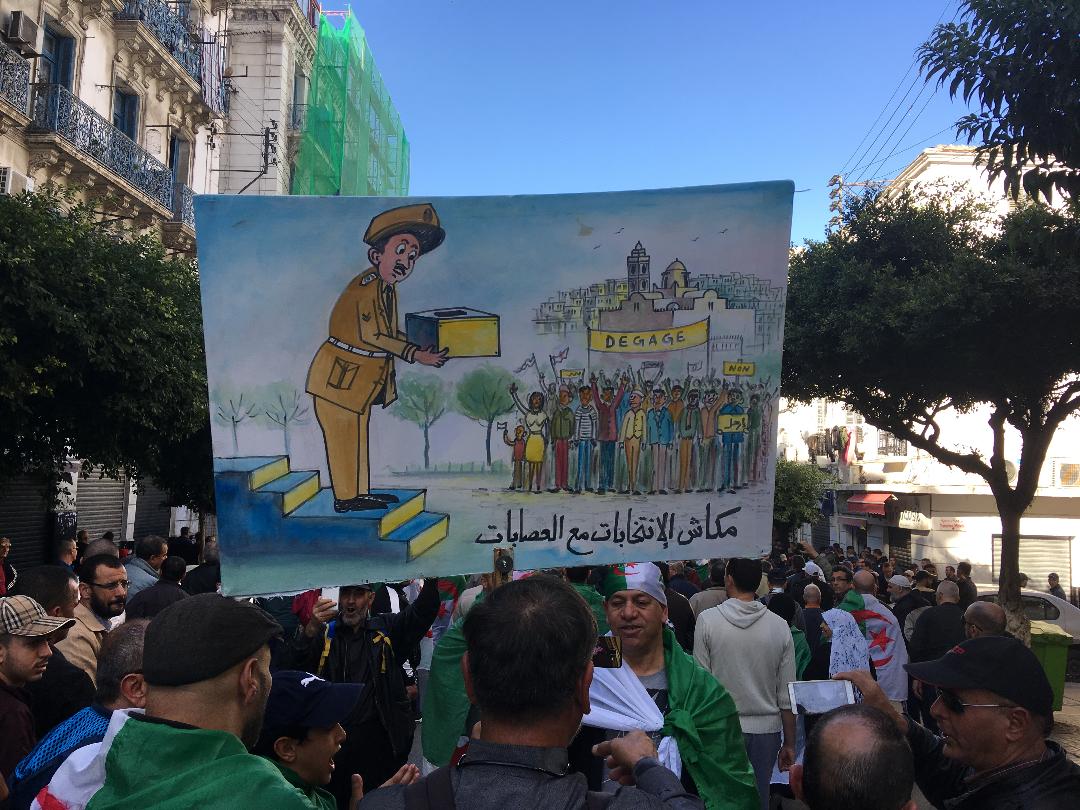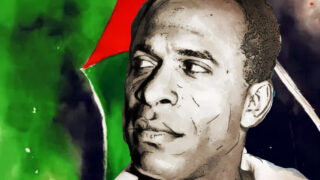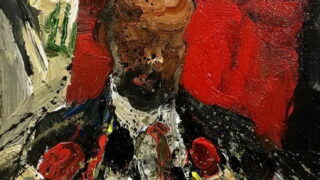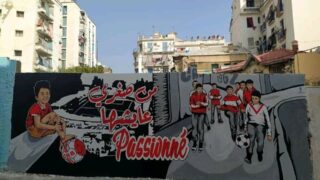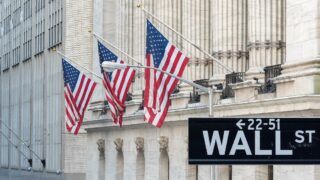
This publication has benefited from the support of the Rosa Luxemburg Foundation. This text may be reproduced in part or in full, provided the source is acknowledged.
Has the health crisis, brought about by the Covid-19 pandemic, momentarily interrupted the Hirak –which broke out in Algeria on February 22nd, 2019– or rather suffocated it definitively? While purely rhetorical to many activists, such a question torments those observers who tend to miss political markers, somewhat lost in a limbo of hope ever since mid-March 2020, when the weekly mass protests were suspended. Four months later, a beginning of an answer could be briefly formulated: the reasons that spurred a large part of the population to rise up, very peacefully, are more relevant than ever (1).
In fact, the military authority met none of the Hirak’s basic demands. At the forefront of these persistent demands one finds the establishment of a State of law as well as the respect for civil liberties. Both of which still fail to appear on any agenda of the de facto authorities or their “roadmaps” – to repeat one of the former’s inept regurgitated phrases. Social forces that had mobilised to assert the people’s right to live freely and justly have not evaporated. They are alive and kicking, and observe an intensifying repression, proof of the regime’s flat refusal to engage. Nothing has been done, then, to reduce the political divide between rulers and society.
The gap between people and the ruling power
In fact, the rupture between the regime and the bulk of Algerian society became irreparably complete with the sudden and widespread burst of millions of protestors into a political scene that has been locked down since well before the current pandemic, by agents of the military-police establishment, which reigned unchecked throughout the country. Under the stupefied watch of some political commentators, who thought the Algerian people were genuinely depoliticised, the latter demonstrated real political maturity and an accurate understanding of the regime’s actors, limitations, and mode of operation. From the summit of its quasi-mafioso Cupola all the way to its governmental and administrative façade, the regime was naked for all to see. It has been particularly so ever since the coup d’état of January 11th, 1992, which violently ended a nascent democratic process. Despite recourse to worn-out ruses, which sometimes included death by hanging, and futile attempts of face-lifting its civil façade, the regime remained unchanged. The dictatorship of military commanders could no longer be hidden behind civil screens.
What Has Remained of the Left in Algeria?
06-03-2020
Algerian women and men know, from experience, that the problem the country faces has little to do with replacing certain figures – in the hopes of positively changing a bleak political and social context that lacks prospects. Alterations in the human component of the system remain of little influence on any of its structures and modus operandi. Such reality was demonstrated by the changes that occurred in the upper ranks of the military, such as those following the ousting of Abdelaziz Bouteflkia; those brought about in the aftermath of the omnipotent president’s, Major Ahmed Gaïd-Salah, death on December 23rd, 2019, at the age of 79; as well as his replacement by one of his followers, barely younger, General Saïd Chengriha (aged 74). Such unforeseen change took place a few days after the December 12th presidential elections of Abdelmadjid Tebboune (aged 74) –an unremarkable antediluvian apparatchik– under even more ludicrous terms of fraud than usual.
Such changes taking place within a state of stagnation show, first and foremost, the virtual impossibility of the regime to replace itself, and, even more so, to inject new blood into its leadership. The gerontocracy seems to caricature itself in promoting elderly personnel, who, under less absurd skies, would have belonged to the retired workforce. Such was the case in July 2020 during the appointment of General Benali Benali (aged 80) to a newly created rank: Army General of the head of the Republican Guard. The average age of Algerian decisionmakers, responsible for last-minute operations of State affairs, is undoubtedly one of the highest around the world. Such a geriatric dimension is particularly conspicuous –and incomprehensible– in a country that faces enormous challenges and populated by 44 million inhabitants, a majority of whom are under the age of thirty.
The dictatorship, its social base and backings
Having exhausted its resources, this senescent regime, based on nothing but coercion, still has support from a small social base, gathered from those classes that enjoy direct or indirect access to economic rent. Such clientele benefits from economic and social spinoffs from its proximity with the upper ranks of the military and police, as well as with oligarchs and businessmen who belong to interest groups that are linked with military commanders and political police chiefs. In a country whose army and its various security services are made up of approximately a million men, such a base –currently in dwindling dynamics due to inexorably shrinking hydrocarbon rents– is quite a considerable one. The decline is clear, however: unlike the pseudo electoral campaigns for President Zéroual and Bouteflika, the politico-police apparatuses were no longer in any position to organise “spontaneous” marches in support of presidential candidate Tebboune. Out of ideas, the regime had to call on soldiers in civilian garb to appear in an unconvincing televised rush to the polling stations.
Algerian women and men know, from experience, that the problem the country faces has little to do with replacing some members of the regime – in the hopes of positively changing a bleak political and social context that lacks prospects.
It is out of this human hotbed that the political police –a veritable human-resources service for the regime, and despite important leadership changes in 2019– continues the good old appointing and co-opting of political and administrative cadres (tasked with keeping up civil appearances for the regime), bureaucrats (who facilitate a feigned political scene), and, last but not least, those in charge of communication, journalists and their likes, such as bloggers and social media actors, (destined for propaganda and media distractions).
On an ideological level, to those profiles we must add defectors from Stalinism, some representatives of the Fourth International, along with a, mostly liberal, “secular modernist” trend brought in from a francophone petty bourgeoisie who had, very early on, justified the 1992 coup d’état against democracy as well as physically eliminating Islamists in the name of an anti-religious interpretation of a very dogmatic Marxism. It is from within this sector of Algerian society –quite a real one though very minor, and clearly much less present in younger generations– that the political police recruited its megaphones and missionaries, commissioning, during the 1990s, actual “diplomatic commandos”, notably in France, in order to guarantee an “aftersales service” to the coup d’état. Those were very positively received into the political and media world, particularly into influential currents of a republican “secular left” as well as into neo-colonial and pro-Zionist circles. Heirs to those preachers of eradication, writers or editorialists based in Paris and community activists behind Islamophobic agitprop, continue their back-up work.
However, in Algeria, as elsewhere, the value of political actors and agents that dominate the State and control its apparatuses are directly dependent on the cause they defend. Its depraved management, characterised by incompetence and dishonesty, has reached abysmal depths. The regime can only recruit opportunistic and immoral elements – only they would be capable of assuming the erratic choices of a leadership busy with nothing but its short-term survival. These mercenary and servile castes breed within a growing mediocrity. The management –catastrophic in every respect– of the pandemic crisis confirms an extremely serious failure and absurd fruitlessness on every decision-making level. In his own vulgar but eloquent way, one of the “Janviéristes” (2) generals –most culpable for crimes committed against humanity, General Khaled Nezzar– highly upset by the poor performance of his witnesses (who belonged to such circles) during the libel trial he lost, in which he sued the Dirty War book author (3) in Paris in July 2002, generically described these circles as “livestock” … Vulgarity and corruption, then, could be added to remarkable incompetence.
The Hirak’s political and social engines
In their vast diversity, Algeria’s women and men found their civic dignity in the Hirak; they can perfectly identify actors, their allegiances, and the clientelist organisation that binds them with the regime. Very evidently aligning itself with the Algerian Revolution and founding appeal of the Nation of November 1st, 1954, the Hirak pinpoints the counter-revolutionary forces – those that buttress themselves to preserve their privileges through repression, denial, lies, and manipulation.
This regime, based on coercion, still has support from a small social base, gathered from those classes that enjoy direct or indirect access to economic rent, due to their proximity with the upper ranks of the military and police, as well as with oligarchs and businessmen who belong to interest groups linked with military commanders and political police chiefs.
The Hirak social components can be seen with the naked eye: its grand majority comprises popular and economically marginalised groups. The majority of the countless cohorts of protestors is clearly made up of these unemployed and futureless youth hailing from popular neighbourhoods. In that regard, the chants and slogans protestors repeat the most are quite revealing: they are the ones football fans repeat. Moreover, those youth that constitute the social base and avant-garde of the Hirak are definitely not alone. They are joined by the informally-employed sector (extending beyond the boundaries of economic laws and made up of almost half the 8 million working people in Algeria) as well as low-wage workers (eroded by loss of purchasing power) – certainly present throughout the entire national territory. Likewise, a considerable part of the middle classes was also hit by the crisis, now aware of the general impasse the country faces.
In that respect, the very strong mobilisation of universities, educational organisms, and students should be noted; very early on, they succeeded in insisting on another day of protests, Tuesday –alongside Friday, that is– whose protests were highly mobilised and, often, more suppressed than the Friday ones. These circles, which witnessed strong female presence, also comprised all age groups. From a social and demographic viewpoint, then, these protestors were quite representative of all major sectors of the population.
Such representation may be recognised all throughout the country: all regions of the country and practically all its cities took part in the demonstrations. In spite of attempts to manipulate and divide, the linguistic regions, Arabic and Amazigh speaking, would not be divided; quite the contrary – they continued to chant the very same democratic watchwords. Even if, more generally speaking, mobilisation appeared to fluctuate, it had confirmed its nation-wide and solid character. All throughout the Hirak Fridays, and in spite of insidious elegies the Cassandra choirs sang on social media, the marches, more or less packed – depending on the week, did not dissipate.
The dictatorship’s political culture is built on violence and total contempt of the people, represented as one spineless, conscienceless, totality.
Likewise, these demonstrations rarely split up over ideological criteria, even if groups (or “squares”, as locally called) were formed according to political affinities. Islamist, national, anti-liberal, and feminist groupings were observed without any of them particularly dominating the other, at least in terms of slogans. Certainly, banners expressing positions close to the working classes could also be seen, but the common watchwords largely prevailed. As such, “Dawla madaniya mashi ‘askaria” (a civil and non-military State) seems to be the slogan to have garnered the greatest approval.
The Hirak’s political awareness
As these observations demonstrate, public opinion knows perfectly well that it is naturally made up of diverse and oft-antagonistic political sensibilities, which is also the case when speaking of the state of the market as well as economic State regulations. Far from being anomic, society does not consider that a defect – the one-party era is gone for good. Contrary to commissioned analysts’ representations, the Hirakists precisely set out political priorities, and have not fallen into any psychological traps the political police had set up.
Obviously, very few protestors paid any attention to the distorted contradictions –which brought Islamists and secularists, liberals and anti-capitalists, and Amazigh speakers and Arabic speakers face to face with each other– that the regime’s social media actors wished to impose. As such, intermediaries of counter-revolutionary propaganda came up against a much finer political awareness. Most activists put it quite plainly: at stake is the dictatorship, a State of law is what they seek, and the desired outcome is a just political framework for the living-together of the entire Algerian people. Anything beyond these preconditions may be discussed as soon as those were met.
The Hirak social components come from popular and economically marginalised groups. The majority of the countless cohorts of protestors is made up of these unemployed and futureless youth hailing from popular neighbourhoods. And the chants and slogans protestors repeat are the ones football fans do.
Islamist, national, anti-liberal, and feminist groupings were observed without any of them particularly dominating the other, where common watchwords largely prevailed. As such, “Dawla madaniya mashi ‘askaria” (a civil and non-military State) seems to be the slogan to have garnered the greatest approval.
Beyond an incontestable state of escalation, it seems that online debates and polemics represent but a sliver of a much more nuanced reality. Among the many and anonymous leaders of the Hirak, few are willing to get sucked into the deadlocked spiral of ideological controversies. Especially since activists know that provocations are common and that large-scale police surveillance of social media translates into arrests and prison sentences for committing the “offence” of self-expression.
The long road to emancipation
An intensifying repression is its concrete translation. Exclusively busy with its survival, for its part, the regime intends to take advantage of the health crisis in order to suffocate and annihilate the Hirak. Since Spring 2020, wholesale imprisonments and heavy sentences dealt by a servile system of justice and unscrupulous judges prove, beyond dispute, such intentions. The dictatorship’s political culture is built on violence and total contempt of the people, represented as one spineless, conscienceless, totality. Rather than engage in a critical review of its disastrous management and carry out an uncompromising evaluation of its actions on the ground, the regime adds insult to injury. The insulting statements the walis (4) gave are quite enlightening in terms of authoritarian morals: the Sétif Wali called for “Hitting the people back into their proper place”, while the Djelfa Wali proclaimed that “It’s better to die from hunger than from Covid-19”. The regime thus reproduces what had gotten it into the current state of affairs in the first place. In its attempts to create confusion around the causes that led to a deteriorating health crisis, the regime perniciously revisits the theme of blaming “irresponsible plebeians”. It attempts to hold the people responsible for the accelerated spread of the virus, rather than critique a morally and politically bankrupt administration.
Very few protestors paid any attention to the distorted contradictions that brought Islamists and secularists, liberals and anti-capitalists, and Amazigh speakers and Arabic speakers face to face with each other.
The decisionmakers did not know, or want to know, how to make use of the pandemic in order to build bridges towards the Algerian people. Conversely, their chaotic management of the health crisis, their obvious negligence, and quasi-total abandonment of the population only deepened the discontent and mistrust. The combination of repressing the Hirak, suffocating voices that suggested an alternative discourse, and mismanagement of the general situation, both health-wise and socially, could only reinforce popular determination to realise change.
Such a battle for civil emancipation is part of the “long duration” (5) to national liberation and state-building. The social and political forces that drove and invigorated the Algerian people’s movement for a rule of law and liberties are product of a history of long-duration resistance, forces that do not give up on their struggle. And especially so when the country’s prospects cannot allow for such slackening; for, while the current circumstances are worrying, the immediate future is critical – economy has come to a standstill and the future of rising generations is threatened.
Thus, the conditions that prevailed for the people’s peaceful uprising remain intact. Rather than a headlong rush into outmoded and inefficient authoritarianism, the regime still has the time to prepare for a peaceful, orderly, and calm evolution towards a State of law. The responsibility now lies upon its leaders and executives’ shoulders. Those among them who think that such mass discontent is a foreclosed matter therefore commit a huge error. In their dynamic history, Algerian men and women have resolutely aspired for a better life, for respecting their dignity within a sovereign framework – one based on liberties and structured on law and independence of the judiciary. Who could restrain such forces in motion, deeply inherent to this people, or force them to break with such aims?
While Covid-19 may well have suspended the Hirak, it has certainly not extinguished it.
The content of this publication is the sole responsibility of Assafir Al-Arabi and Rosa Luxemburg Foundation cannot accept any liability for it.
Translated from arabic by Yasmine Haj
Published in Assafir Al-Arabi on 06/11/2020
1- For more on the origins of the Hirak, it would be useful to refer to the collective work authored by the Hirak collective in Algeria, The Invention of an Uprising, supervised by Omar Benderra, François Gèze, Rafik Lebdjaoui, and Salima Mellah. Paris: La Fabrique Editions, 2020.
2- The “janviériste” neologism refers to the military leaders responsible for the January 1992 coup d’état.
3- See Habib Souaïdia, The Dirty War Trial. Algeria: General Major Kahled Nezzar vs. Lieutanent Habib Souaïdia, La Découverte, Paris, 2002.
4- Walis are the equivalent of French prefects, governors of provinces.
5- In reference to Fernand Braudel’s term – long-durée.

